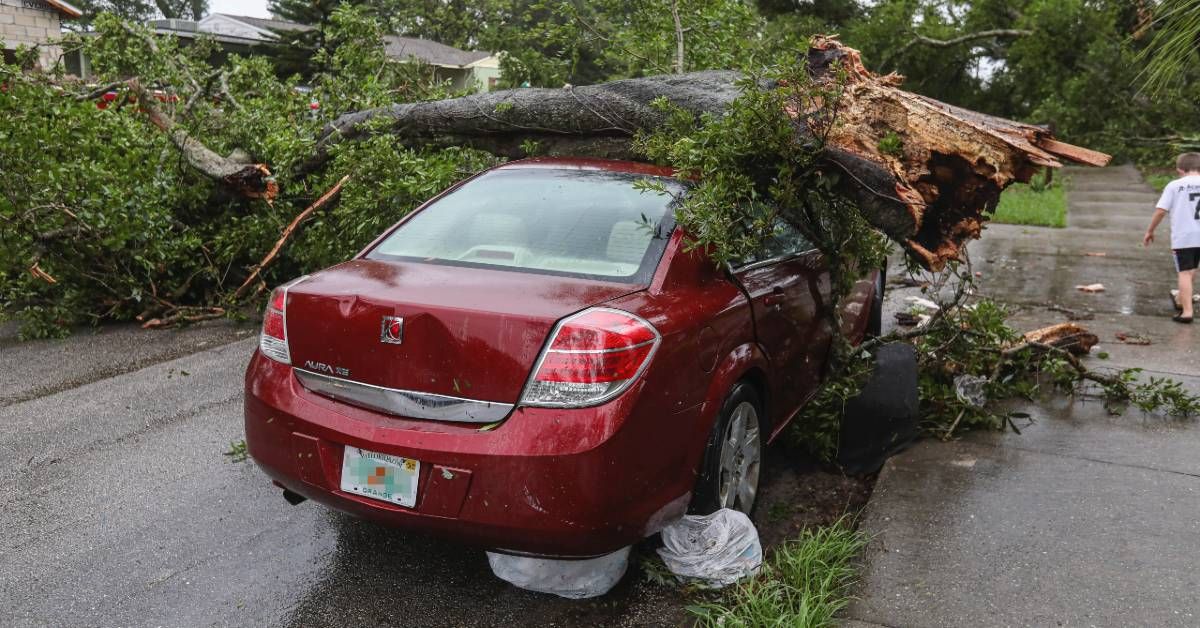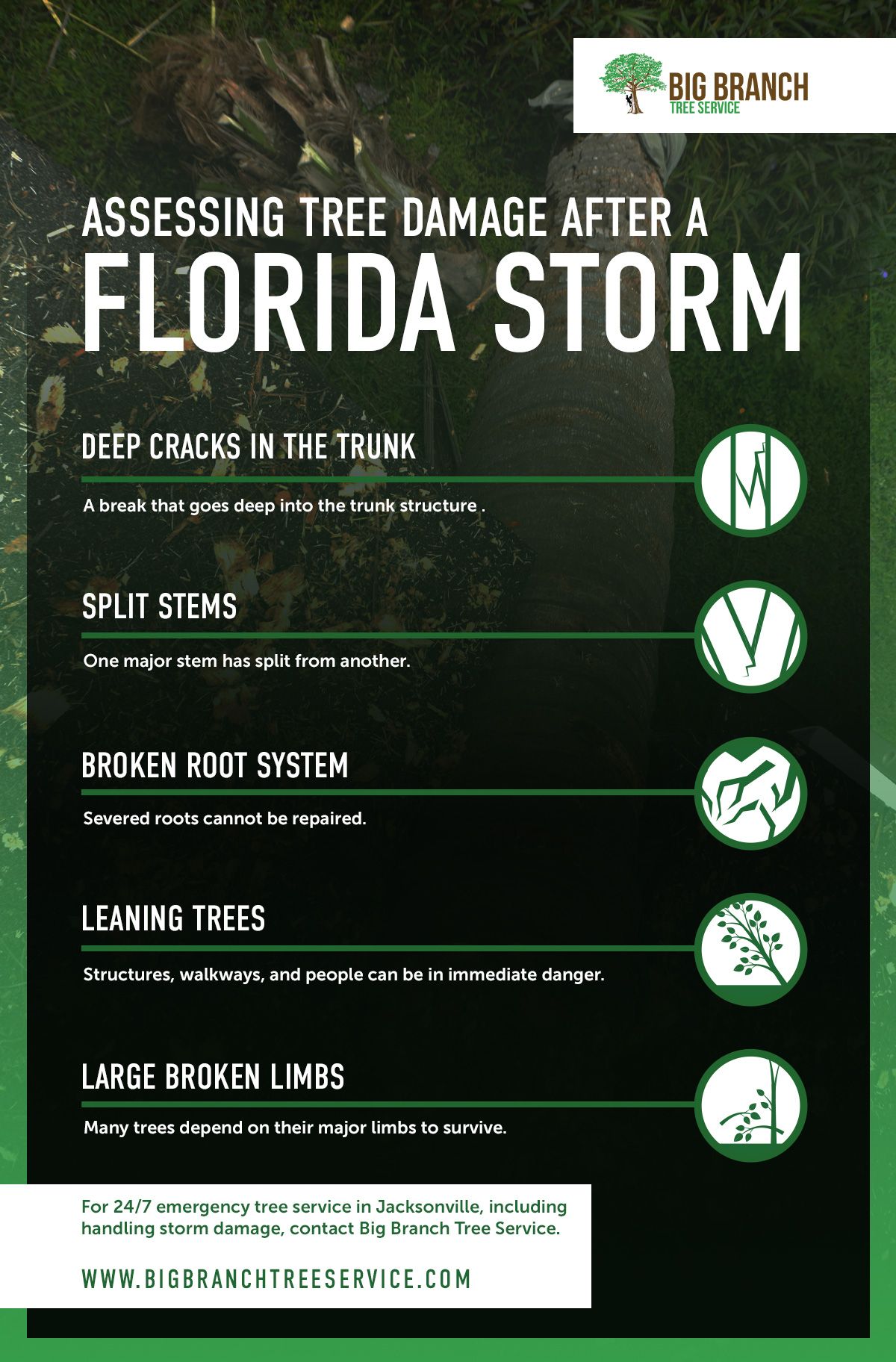If you see any of the following types of damage or warning signs in your trees, it is very likely the tree will need to be removed, as they pose a serious safety risk to people and property.
Cracks or Breaks in the Lower Trunk
Oftentimes, when a large limb of a tree breaks, it can create a crack that extends deep into the trunk. Deep cracks low down on the trunk of a tree are almost impossible to close, and it’s very likely that the rest of the tree will ultimately fail regardless of any attempts to save it.
Large Split Stems
Some tree structures include a splitting stem that is in a type of V-shape. When one of these branching arms of a V-shaped tree splits, it’s likely that the tree cannot be rescued. This split structure is unfortunately very susceptible to breaking when exposed to severe weather, as the point where the two stems converge is typically relatively weak.
Severed or Broken Root System
When large, mature trees show signs of a broken root system, it’s basically game over for that tree. Trees that have reached a certain size and age rely on large root systems for support, and when that support system is severed, there isn’t much that can be done to help that tree. At this point, they’re unstable and unsafe. It’s possible that younger trees can be saved from this scenario, but we’ll address that later.
Leaning Trees
A tree that is beginning to lean due to storm damage is a telltale sign on its own, but when that tree is leaning towards a structure, roadway, powerlines, or another high-traffic area, it is an immediate safety hazard that needs to be addressed. When trees are leaning, it’s practically guaranteed that it has suffered severe root damage. To avoid the leaning tree from falling and damaging a structure or injuring a person, it should be removed immediately by a professional tree service team.
Trees Structurally Susceptible to Damage
Some trees simply are dealt a bad hand and are inherently structurally susceptible to damage. It is quite common to see trees that have characteristics like multiple trunks, codominant stems, and weak unions between branches (called “bark inclusions”), to be prone to taking damage easily during storms. Even if storm damage to these types of trees seems minimal at first glance, a professional tree service can assess the tree’s potential for failure and make recommendations regarding possible removal to avoid damage.
Major Broken Limbs
If it appears that most of the major limbs of a tree have been damaged or felled, that is usually an indication of a type of tree injury that is impossible to recover from. When most of a large tree’s canopy is destroyed, it’s very unlikely that the tree will survive, and should be removed.


